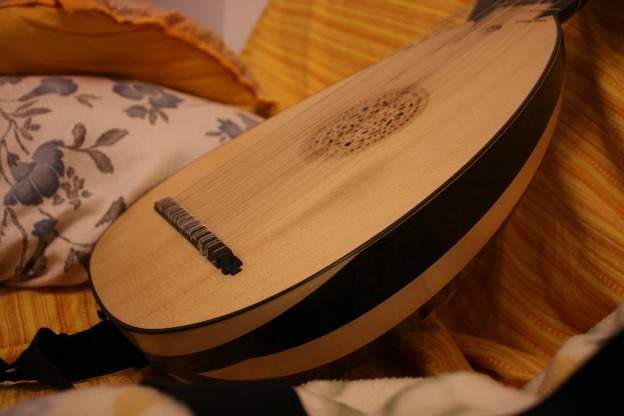
Alfred Deller
Harmonia Mundi's 2012 re-issue of Alfred Deller's recording of lute songs by John Dowland, first came out in 1978. Alfred Deller was a pioneering countertenor, and this release was one of the last recordings he made before he died at the age of 65. Besides Alfred Deller, lutenist Robert Spencer and The Consort of Six also perform on this recording.
The Dowland song called, Can she excuse my wrongs, is performed in three different settings on this recording. The first by lute alone, then the same tune again with Alfred Deller singing, and finally, a consort version.
We owe a lot to Alfred Deller for the development of the countertenor voice and for its popularization in the 20th century. When Deller first debuted as a countertenor in the 1940's, most people didn't expect that voice to come out of that person! Deller was especially interested in early music by English composers like Dowland and Purcell. His interpretations, performances and recordings of this music blazed a trail for performers of early music who came after him.
Dowland's First Booke was hugely successful during his lifetime as seen by its subsequent reprinting of at least four times between 1597 and 1613, producing an estimated 6,000 individual copies of the book for public consumption during his lifetime! It was printed in what is called a "table book" format. When the book was placed on a table, the different parts faced in different directions so the people playing could sit around the table, have space to sing and play their instruments and still see their parts – it was very efficient! Dowland indicates that the songs can be performed just by one person who would accompany him or herself on the lute, or by several voices or instruments. The flexibility of the scoring no doubt helped to sell copies of the book.
A lot of Dowland's pieces exist in arrangements for instruments, for example, in Thomas Morley's Book of Consort Lessons from 1599. It's not really clear whether Dowland was directly involved or not, but this Morley arrangement is made for what used to be called a "broken consort" because all the component instruments are different. The Consort of Six are performing on a group of instruments that is found in any number of English manuscripts as a sort of band with melody in the treble viol and lute, harmony in the flute, the bass line is covered by the bass viol, and a rhythm section of three plucked instruments - lute (doing double duty) along with bandora and cittern, both wire strung instruments.
Jakob Lindberg
The chittarone is none of your consort of six, but it is a also a plucked instrument. It has a very, very long neck – terrible for travel on airplanes, as you can imagine. It is used as a solo instrument, though it is more frequently heard as a continuo instrument, wonderfully suited to accompanying a voice or being a part of a continuo band combined with other instruments such as harp, lirone, harpsichord or organ. There is another closely related lute-like instrument called the theorbo, which has a shorter neck, that is also part of the continuo section and the two names are often used synonymously in Italy. The chitarrone's name is one invented by the humanists who wanted to invoke the classical Greek kithara.
The 2012 release by BIS called Italian Virtuosi of the Chitarrone features Jakob Lindberg, a player who emerged in the generation following the groundbreakers like Alfred Deller and Bob Spencer. Included is a piece by Giovanni Kapsperger called "Arperggiata" a piece that certainly grabs the attention. There are also dances, and variations on standard Italian grounds like the Bergamasca, the equivalent at the time to the 12-bar blues (though admittedly here, the pattern is only 8 bars, not 12!)
The fact that you can hear the performer breathing on the recording is an interesting indication of how closely mic-ed the chittarone is. You can also hear quite a lot of left and right hand articulation. Usually we expect the plucking hand to make most of the consonants and the left hand to make sure that the correct notes are heard, but this is a very good example of how articulation can come from either hand.









